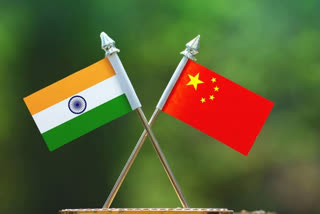New Delhi:India stands to lose out more if it agrees to the three-step disengagement plan proposed by the Chinese side during the eighth round of corps-commander level talks at Chushul in eastern Ladakh on Friday (November 6).
Multiple highly-placed sources told ETV Bharat that the proposals are still being considered and final decisions are yet to be taken.
Step One
The first step proposes pulling back tanks and armoured personnel carriers within a single day from the forwards positions where they were deployed.
This mainly includes positions in the Galwan Valley, the southern bank of the Pangong Tso, and at the Spangur Gap.
While Indian assets mainly comprise T-72 and T-90 tanks, and BMP II infantry combat vehicles, Chinese vehicles include light Type 15 tanks and DongFeng Mengshi vehicles.
If India pulls back these heavy assets from the Galwan Valley, it will be far more difficult for India to redeploy them in quick time unlike the Chinese who have easier terrain and better road infrastructure towards their side. Many Indian and Chinese vehicles were left stranded in the narrow Galwan Valley after waters rose suddenly after the June 15 incident.
On the south bank of the Pangong lake and the Spangur Gap, the Chinese heavy assets are surrounded by Indian positions at dominating heights. Instead of being boxed in, China would be looking for ways to pull such assets back.
Also read:China import expo sees fewer exhibitors
Additionally, it won’t be easy for both sides to extricate their tanks and heavy vehicles from such difficult areas in just a single day.
Step Two
As a second step, China has proposed a mutual withdrawal of about 30 per cent of troops every day by both sides for three days in the northern banks of the Pangong Tso. Such a pullback will take India back to the Dhan Singh Thapa post between Finger 3 and 4, while the Chinese will go back beyond Finger 8.
This leaves a big question over the areas both sides had patrolled. While India patrolled till Finger 8, China patrolled till Finger 4. While the Chinese patrolled on vehicles on a fine road till their patrolling extreme, Indians patrolled on foot.
A mutual withdrawal would mean leaving the area between Finger 4 to Finger 8 as a buffer zone almost like a no-man's land. From the Indian point of view, this is a conceding of ground from the April-May position.
But very importantly, it will mean giving up recently-populated dominating heights that overlook the Finger 4 ridgeline where the PLA has set up positions.
Step Three
The third step involves stepping back the frontline along the southern bank of Pangong Lake area which includes the heights and territories around Chushul and Rezang La area. It was India’s tactical masterstroke on the intervening night of August 29-30 when the elite Special Frontier Force (SFF) personnel beat the Chinese PLA to occupy the high points on the southern Pangong Tso bank which overlooks Chinese positions. To give up these positions would be a tactical folly.
The November 6 talks were the eighth round at the military commander level after June 6, June 22, June 30, July 14, August 2, September 21 and October 12.
Also read: Rajnath hits out at Rahul for 'misleading' claim on China
In the six months of intense negotiations, the ‘disengagement and de-escalation’ talks have not been able to achieve much mainly due to the intricate nature of the India-China border issue as well as the lack of mandate of the participants at the talks which later also included a senior diplomatic component.
Despite signs that the two sides may work out some alignments if some agreement is reached on the latest proposals, it will at best amount to the agreement on a buffer zone and will by no means end the rapid militarization that eastern Ladakh has seen in the last six months.
As of now, trust deficit is the biggest hindrance to a working relationship between the two powers, which has only set up a widening chasm since April-May.
